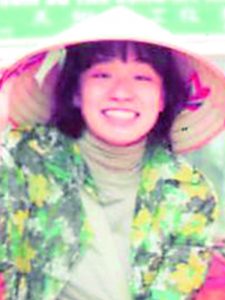A02:Deduction of production sites through analysis of archaeological remains
Where were the symbols of authority created and how were they propagated?
|
|
| Yoshimi KAMIYA (Kanazawa University) |
Prestige goods such as lacquerware, cinnabar, jades, stoneware and specific earthenware (including colored, white and black earthenware) have been defined as symbols of authority of the elite class. Where did they originate, what were their components, how were they made, and how were they propagated? Our project team will analyze the materials of prestige goods that supported Chinese civilization to identify their production sites. We will clarify how prestige goods were used and how their production techniques were transmitted in the early stage of Chinese civilization.
We will carry out our surveys under five themes: 1) reconstruction of lacquerware coating processes through analysis of materials, 2) survey of distribution routes through the identification of cinnabar mercury production sites, 3) identification of accessories such as jades and turquoise and stoneware and their uses, 4) clarification of the relationship between earthenware and the geological environment through the analysis of earthenware and 5) clarification of the propagation of regarding plant use by analysis of residual starch grains. In order to understand how prestige goods were propagated, we will analyze residual starch grains as another important material besides lacquer. We will analyze starch grains remaining on the surface of earthenware and stoneware that were used for processing and cooking, and bronzeware that was used for religious services. We will clarify the roles of plants as food or for religious services, and their regional features.
We will examine various prestige goods regardless of their being organic or inorganic, through a combination of chemical, mineralogical, geochemical and botanical analysis. It is a new integrated study that is quite different from conventional studies on Chinese prestige goods, which have been limited to specific goods such as earthenware and bronze. We will clarify how people interacted and goods were distributed, and how the social structure changed to reveal the reality of society in the times when Chinese characters had not yet been established. Through the multidirectional study of prestige goods, without an inclination toward specific fields, we will clarify how raw materials were used in ancient China and how their techniques were developed and transmitted, revealing the temporal and spatial distribution of goods production.
【Members】
| Principal investigator | Yoshimi KAMIYA | Kanazawa University |
|---|---|---|
| Co-investigator | Yoshiyuki IIZUKA | Kanazawa University |
| Ayako SHIBUTANI | Tokyo University | |
| Takashi MINAMI | Nara Medical University | |
| Tomoko ISHIDA | Kagoshima University | |
| Research collaborator | Kazuya TAKAHASHI | Institute of Physical and Chemical Research |


